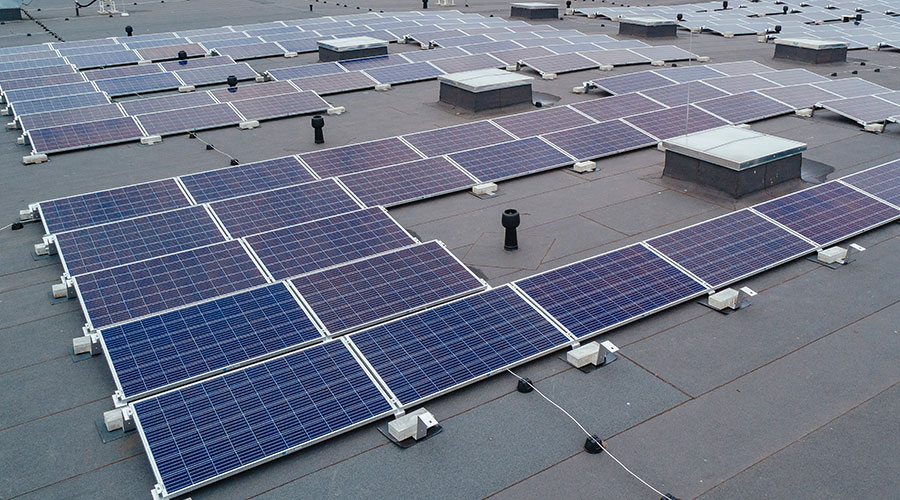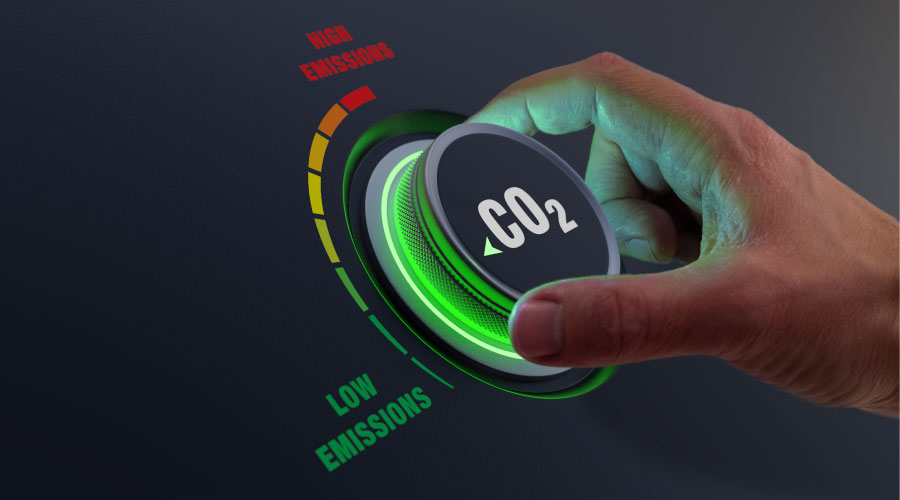Boiler Hot Buttons
Burner adjustments, water treatment, and thermal-shock prevention can improve boiler performance
By Walter D'Ascenzo and Rebecca A. Hummel
As summer days replace winter, it is difficult for maintenance and engineering managers to put boiler maintenance at the top of the priority list. But preventive maintenance helps avoid unscheduled equipment problems and reduces the possibility of inopportune downtime.
Unfortunately, managers and front-line technicians too often take maintenance routines for granted and defer them because of a lack of understanding of the actual issues behind recommended maintenance practices.
Burner Issues
Burner efficiency is most important in light of rising fuel costs. Improper mixing of air and fuel could result in the fire being too rich and not receiving enough air.
Any incorrect combination affecting combustion efficiency lowers boiler efficiency. Even a minimal accumulation of soot and ash on the fire-side surfaces can lead to reduced heat-transfer efficiency as a result of too-rich burning.
Annual cleaning minimizes this accumulation, but an improperly adjusted burner can easily usurp the best intentions early in the heating season. Boilers should be fire-tested periodically, using flue-gas analysis, to properly adjust the flue draft and the combustion air input to optimize efficiency. Adjustments based on visual observation alone are not accurate and can aggravate inefficiency.
Chemical Treatment
Most managers understand the need for chemical water treatment. Should testing indicate the need of chemical treatment in a closed-loop heating system, a one-time treatment should be sufficient.
Nitrite is the chemical treatment product used primarily in closed-loop boilers, as an oxygen scavenger. Steam boilers, on the other hand, require annual testing because of ongoing water use.
The recommended action is treatment of steam-boiler make-up water. High-pressure steam boilers also require de-aeration of the incoming make-up water to flush out surplus oxygen.
Further complicating matters is the understanding that manufacturers of sectional cast-iron boilers recommend not using any chemical treatment in their boilers because of possible interaction with section seals. Chemical treatment has been known to damage those seals, causing leaks.
Normal, fresh domestic water contains dissolved oxygen, and its presence contributes to the water’s corrosion potential. In a closed-circuit heating system, dissolved oxygen is expelled at the operating temperature, rendering the water non aggressive. Leaks and other corrosion problems found in a small number of systems can arise from air entering the water circuit that is a direct result of poor design or improper installation or operation.
Pumping primary water over the vent pipe into the feed and expansion tank can be reoxygenate it. Negative pressure aeration occurs when air is sucked into the system either down the vent pipe or through minor leaks in fittings, which are often too small to let water escape.
Proper location of the pump, vent pipe, and feed and expansion pipes can prevent instances of overpumping and negative pressure aeration.
A worst-case example of this scenario occurred in a 15-story high-rise condominium built in Baltimore in 1966. Managers continually battled air infiltration. Acting on a recommendation by a mechanical contractor, technicians abandoned in place the original steel expansion tank located at the top of the risers in a penthouse machine room. They replaced it with a pair of bladder-type expansion tanks at the bottom of the risers in the basement boiler room.
The expansion tanks provided some relief, but they did not address the root cause of the air infiltration, leaks. Further assessment revealed that 47 valves, ranging up to 8 inches in diameter, within the boiler room and mechanical crawl space, were overdue for replacement or were deteriorated to the point of leaking.
Types of Corrosion
The different events created by oxygen-enabling corrosion can create hidden problems that result in reduced efficiency and, ultimately, failure. Should a heating system require continual water make-up, a number of problems might occur.
Corrosion of steel heat exchangers will lead to the build-up of black or brown oxide powder in the bottom of the tubes, or to the collection of nitrogen and hydrogen in the top of the tubes. Both of these scenarios can restrict water circulation and heat output.
Where dissimilar metals are exposed in oxygenated water, the galvanic action will corrode the less-noble metal. In mixed-metal systems, the metals most likely to be targeted are aluminum, steel and iron. If the less-noble metal has a large exposed surface, as in a boiler, a small amount of corrosion can be tolerated. Left unchecked, this corrosion event eventually can lead to an expensive, unexpected failure.
Where excessive flux residues are present, such as those found in copper tubes, it is possible for localized corrosion to develop in the form of pits, which eventually can penetrate the tubes in the form of pinholes.
Make-up Water Monitoring
All fresh water available from natural sources requires varying degrees of treatment before use in a boiler. Solids in the form of minerals, chemicals and organic material are all found in fresh water and affect internal boiler surfaces differently.
Maintenance activities that target leaks or pipe deterioration can control the amount of domestic make-up water. An important tool that technicians can add to a boiler plant is a make-up water flow meter installed on the make-up water line of a hot-water boiler. An indication of water flow suggests water loss somewhere in the system, as well as the need to monitor water treatment closely.
Operating Temperature
An important consideration with hot-water boilers is keeping the water temperature above 165 degrees. Lower temperatures support higher surplus oxygen content, which leads to pitting.
Also, wide-ranging boiler-water temperature can cause tube-end failures. The expansion and contraction movement, induced by wide temperature swings, eventually causes cracks in the steel tube-to-tube sheet joints, creating a water leak.
Failures of this sort are classified as metal fatigue caused by thermally induced stress cycling of the boiler structure, known as thermal shock. The reason for thermal shock is directly related to the design of the heating system, which creates a scenario in which returning water is below the minimum temperature acceptable for dependable operation.
One such case occurred in an education facility in Bethesda, Md. The system used modified three-way control valves — the normally open port was capped — as single-seated, or two-way, control valves, creating a dead-end, a virtual no-flow condition. A motor-operated balancing valve controlled by differential pressure between the supply and return piping regulated system pressure.
With no heating demand, the extensive piping feeding the building’s many air-handling units and variable-air-volume terminal boxes held a large volume of water that cooled, yet the boilers were on-line and available. When the “occupied” mode was enabled, the cooled volume of water returned to the boilers below the boiler manufacturer’s 160 degrees recommended minimum, causing the failures.
As a corrective measure, technicians used a bypass-valve control system installed on the boilers to protect them from thermal shock. It worked independently and was designed to bypass low-temperature return water around the boilers until the mixed water temperature rose above the setting of the thermal-shock control element.
The change provided the intended result by shielding the boiler from the mass of cool water returning on start-up, allowing the boiler to maintain a constant temperature during all load and firing conditions. Fuel use did not increase because the boilers did not have to maintain a large volume of water.
Thermal-shock Protection
Controlling the temperature load forced on the boiler can prevent thermal shock. One of the most effective methods to avoid thermal shock is to create a boiler loop separate from the heating-water system, using its own pump. Control against this shock manages the incoming cold-water flow rate so the boiler’s temperature changes slowly.
Installing a three-way valve on the boiler loop can control the amount of hot water introduced into the system, and it can measure the return temperature of the water entering the boiler.
If water temperature drops too much, the three-way valve closes off the system loop. Hot water from the boiler then is pumped back into the return, raising the water temperature entering the boiler. The three-way valve and controller will float back and forth, resetting the supply water to the system while protecting the boiler from cold water.
Control Considerations
The first advance in controls occurred in the late 1970s, when manufacturers introduced microprocessor controls to replace relay logic. Today’s boiler rooms still use a combination of both.
But further advances, such as solid-state sensors and personal computers, have helped managers and technicians obtain tighter process and heating control throughout facilities. These systems improve boiler efficiency, provide more information and enhance safety.
Technology for these controls now includes such features as set-point control, outdoor reset, and an LCD display to monitor and regulate return-water temperature. Integrating these boiler controls with a building automation system (BAS) enables operators to adjust a boiler’s operating parameters and monitor alarm conditions from an office workstation.
It is imperative that managers are aware of the basic precautions in maintaining boilers and their heating systems. Failing to implement a program that addresses these issues can lead to excessive damage to the boiler and piping, which becomes very costly to repair. Proper maintenance and operating practices of a building’s heating system can prolong the service life and ensure safety and efficiency.
Walter D’Ascenzo and Rebecca A. Hummel, E.I.T. and R.S. with Facility Engineering Associates in Fairfax, Va., have more than 35 years combined of mechanical engineering experience.
Maintenance Plans and Manuals
A boiler maintenance plan provides the guidelines for written operating procedures and detailed checklists for operator guidance for boiler maintenance — the preventive maintenance program. The plan should include all functions, both manual and automatic, to help ensure sufficient knowledge of the system regarding proper procedures and personnel safety.
Maintenance and operation technicians must follow and perform all maintenance requirements per manufacturer requirements. Operators must report any irregularity as soon as possible so technicians can take corrective measures before the problem is beyond repair.
Boiler manufacturers provide operating manuals with their equipment. Unfortunately, most boiler operators and technicians have lost track of these important documents. So building managers obtain copies of the manuals for on-site use, and they’ll need to see that maintenance and operation personnel understand and follow them.
— Walter D’Ascenzo and Rebecca A. Hummel
|
Related Topics:










